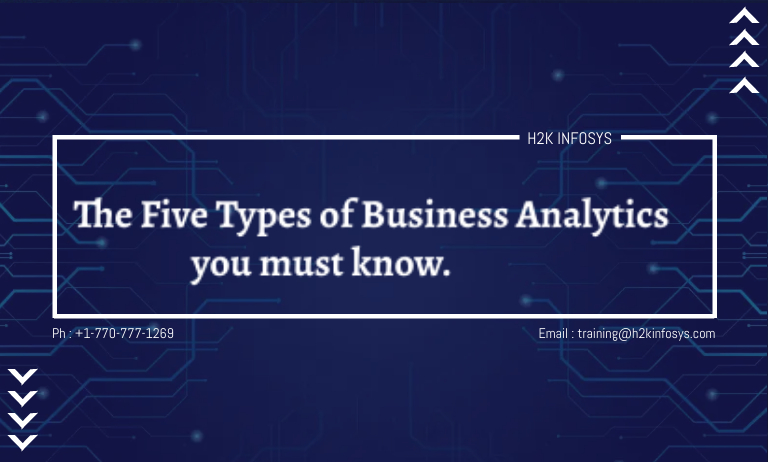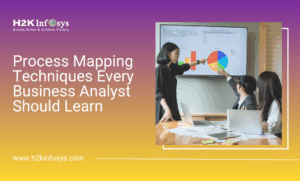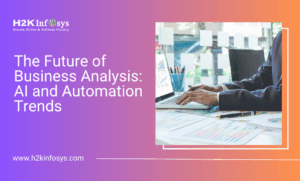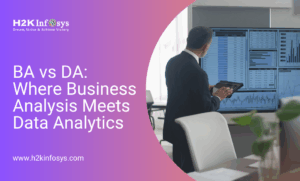The digital transformation in the last few years has taken the world by storm. Data has become a major driver for many business decisions. Hardly would you find a forward-thinking business that would not rely on the intentional analysis of business data to guide their decision making and solve business problems. Virtually all businesses now use analytics one way or another. Statistics show that business analytics solutions are set to surpass over $274.3 billion in value by 2022. Research also shows that a large chunk of business executives admit that their business success can be attributed to the outcome of clear business analytics and big data.
But there are different methods to business analytics depending on the peculiarity of the use case. In this article, we will discuss the five major types of Business Analytics every Business Analytics must be aware of and know how to apply.
Before we dive right into it, let’s give some background about Business Analytics and understand what exactly it is.
What is business analytics?
Business Analytics can be defined as the process in which a business relies on the analytics of historical data using various statistical methods to gain insight, solve business problems and improve decision making.
Following the definition, business analytics can easily be mistaken with data science. While they are closely related in that they solve business problems, they are not exactly the same. Let’s identify how to set these two apart.
Business Analytics vs Data Science.
The focus of business analytics is to extract meaningful insights from data and perform data visualization to aid business decision making. Data science on the other hand involves extracting insights from data and making future predictions through machine learning models and other programming techniques.
So while both fields involve insight extraction, data science focuses on making future predictions using machine learning algorithms. It thus requires some computer programming skills.
Types of Business Analytics.
There are 5 major types of Business Analytics.
- Descriptive Analytics
This is the foundation of business analytics. Descriptive analytics help to summarize the data using data aggregation and data mining techniques. Most real-life data comes in a messy and unstructured format – a way that cannot be understood by mare looking at the figures. Descriptive analytics however help comes to the rescue by succinctly explaining the data. It does not go beyond that however, to make predictions or draw inferences.
It is majorly concerned with the historical data and how it can be represented for better understanding. In descriptive analytics, you will be using various visualizations such as bar chart, pie chart, scatterplot and so on to make the data relatable.
It is believed that over 80% of business analytics is descriptive analytics hinged on aggregating past performance. BY simply analyzing historical data, organizations can get critical insights such as understanding customer behavior, engagement, etc. Some of the tools used in descriptive analytics include Excel, SPSS, Power BI, MATLAB, etc. There are numerous Business Analysis courses that teach you how to use these tools.
- Diagnostic Analytics
This is slightly related to descriptive analytics as it looks at past data. However, it takes a deeper dive to understand why things played out the way they did. Diagnostics analysis is tooted in finding the root cause occurrence, and factors that may affect it. As an example, diagnostic analytics can determine why the business experiences a plunge in sales in a month.
Diagnostics analytics seeks to find anomalies in data and further understand the causal relationships in the situation. Some of the processes used in this stage include sensitivity analytics, correlation plot, feature importance, principal component analysis (PCA) and so on.
- Predictive analysis
Predictive analysis, as the name suggests, seeks to predict future occurrence. It is important to note here that it does not predict whether an event will occur or not. That is basically data science and machine learning. What predictive analysis does is to predict the probability of an event occurring.
One popular application of predictive analysis is in sentiment analysis where people’s opinions on a topic are predicted based on some collected data. Predictive analysis is closely tied with machine learning algorithms and may involve the use of algorithms such as linear regression, random forest, SVM and so on for prediction.
Predictive analytics is widely used in different fields including finance, energy, manufacturing, sports, fintech and so on. Some tools used for predictive analytics include R, Python, etc.
- Prescriptive analytics
This is typically the next step after predictive analysis. After making predictions on past data, it asks the question, what next? It essentially uses simulation and optimization techniques to suggest the best possible outcomes of different actions. It also reveals how to make the expected result become reality.
Prescriptive analysis can take a cue from prescriptive analytics and help to find the best possible action. It works by checking the feedback from actions, and seeing the effect of each action on the result. This then helps the analyst to understand which is the best possible decision to make.
- Cognitive analytics
This is a relatively new method for business analytics, nevertheless, quite powerful. It involves the incorporation of human intelligence in certain tasks. It uses deep learning and machine learning to understand how humans work and attempt to perform tasks with human level intelligence. Some examples of cognitive analytics at work include virtual assistants, recognizing, face recognition systems, image segmentation and so on.
In conclusion
We have seen the five different types of Business Analytics and their unique applications. You can learn how to use different tools to perform each of the analytics processes by joining this Business Analysis Training.





























